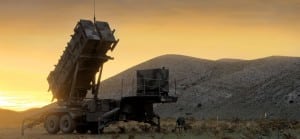
The Army’s new missile defense brain is set to enter initial production in 2016, establishing a critical baseline command-and-control architecture that can tie together various air defense systems into a common network.Northrop Grumman [NOC] is wrapping up live-fire testing of the Integrated Air and Missile Defense (IAMD) Battle Command System (IBCS) and expects a milestone C decision to start production this year, said Dan Verwiel, the company’s general manager of missile defense and protective systems.The system represents a next generation C2…

 By
By 











